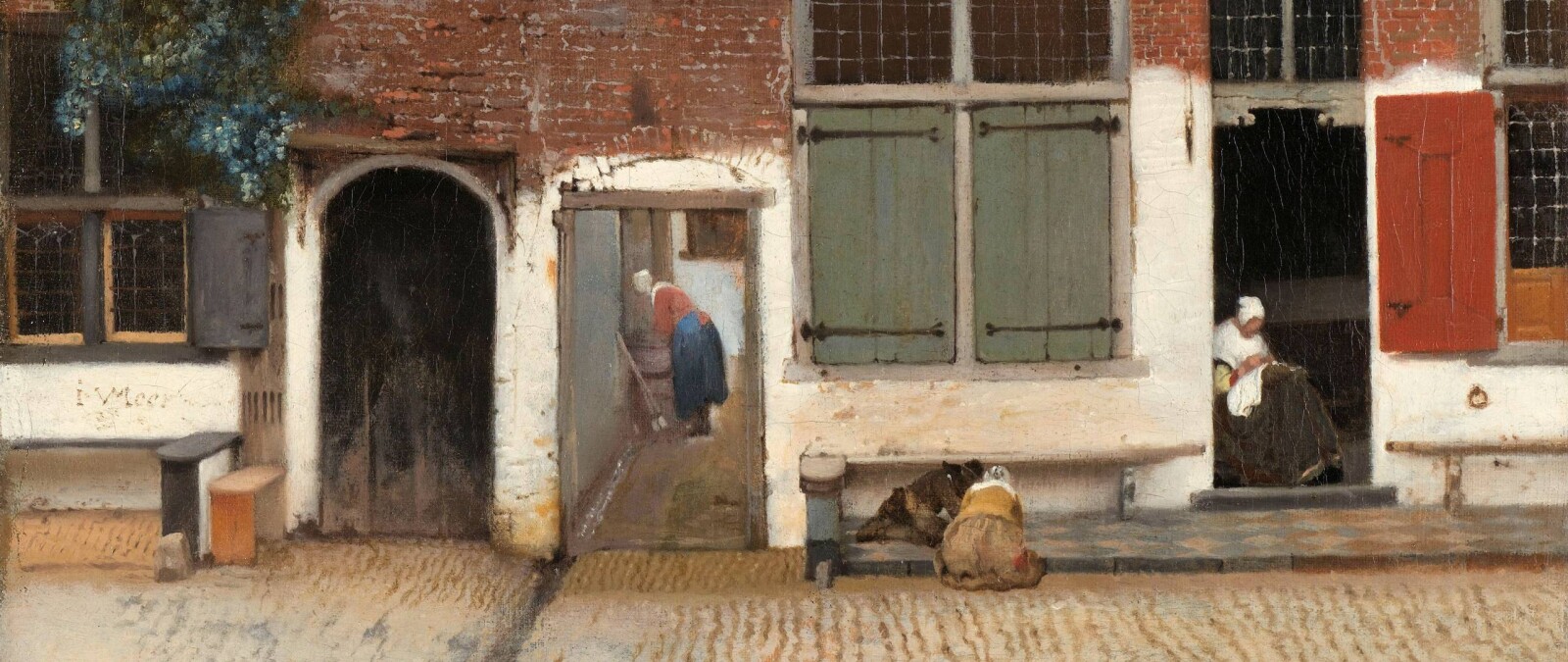The answer lies in the tragic financial situation of Vermeer's family after his death and the lack of recognition of his work at the time.
1. The financial decline after Vermeer's death
Vermeer's death in 1675 was the result of the Great Disaster Years, a period of economic malaise in the Republic of the Seven United Netherlands. The Eighty Years' War was over, but the war with France caused the art market to collapse. As a painter and art dealer, Vermeer felt this directly in his wallet. He died suddenly, leaving his wife Catharina Bolnes and no fewer than eleven children with towering debts.
The inventory of his estate drawn up after his death paints a harrowing picture of the poverty in which the family lived. To satisfy creditors, the family had to give up almost everything they owned, including Vermeer's paintings. Catharina tried to offer two paintings to the baker to pay off a debt of 600 guilders, but the baker did not accept them. In 1677, she was declared bankrupt and most of the remaining artworks – including a large part of Vermeer's own oeuvre – were handed over to her mother-in-law, Maria Thins, in an attempt to protect them from creditors.
2. The Dissius Auction: a turning point
The eventual dispersal of Vermeer's work came after the death of his mother-in-law and, crucially, through the auction of Jacob Dissius' collection in 1696. Dissius, who married Vermeer's daughter and had amassed a considerable collection of Vermeer paintings (probably through the family), auctioned 21 paintings by the Delft master. The fact that so many of his paintings ended up at a single auction and came into the hands of various private collectors meant that the works literally went in all directions. They spread throughout the Republic and later across Europe, eventually ending up in the world's major museums, such as the Rijksmuseum in Amsterdam, the Mauritshuis in The Hague and museums in New York, Berlin and Vienna.
3. Oblivion and rediscovery
Another important factor is that Vermeer fell into oblivion for a long time after his death. His small oeuvre of only about 35 paintings and the fact that he mainly worked for a limited local audience contributed to this. Unlike Rembrandt or Rubens, Vermeer did not have a large workshop with pupils who copied his style and thus kept his name alive.
It was not until the 19th century that Vermeer was “rediscovered” by the French art critic Théophile Thoré-Bürger, who called him the “Sphinx of Delft”. His articles sparked renewed international interest and a hunt for Vermeer's paintings. By that time, the works had long been in the hands of private collectors and museums elsewhere in the world. This meant that Delft had lost its chance to build a collection for good.
The legacy in Delft: archives and memories
Although Delft does not possess any original paintings by Vermeer, the master still lives on in the city. The Delft City Archives hold countless documents, such as baptismal certificates, inventory lists and notarial deeds, which give us a unique insight into his life. In addition, there is the Vermeer Centre Delft, where you can learn about Vermeer's life and work through reproductions and interactive presentations. The city itself, with its canals, churches and streets, is also the unchanging backdrop to his art and therefore remains a place of pilgrimage for Vermeer enthusiasts from all over the world.
And with a little luck, during your visit to Delft, you will see that we still have those beautiful Vermeer skies above the city...
-en.webp)

-en.webp)